Have You Always Wanted to Try Yoga and Never Knew Where or How to Begin?
It sounds like a difficult exercise with poses where you can be stretching for long periods of time or even completing your yoga practice in rooms with hot temperatures?!
Yoga does not have to be difficult and is very therapeutic for your body. Think about how much stretching is underrated. It’s so easy to jump to strengthening workouts such as running, hiking, swimming, weightlifting, kickboxing and more.
But it is still important to stretch your muscles, even if your workouts are focused on strength gains. And you would not even realize how much strength can be gained from holding and moving through different stretching or yoga poses.
Ok so let’s talk a little more about the benefits of yoga:
As you can see, yoga is very powerful and can make a huge impact on your body! One of the most important aspects of yoga that we incorporate into physical therapy is changing pain from being the expected outcome of movement.
To explain this…we go through life suffering with many aches and pains from time to time or sometimes daily. When we deal with pain over a prolonged period of time, our body learns to expect the pain with moving certain ways or when completing different activities. Our muscles have memory and having pain becomes a habit for our body that we “know” is going to happen. One of the main goals of yoga is to teach your body that you CAN move in different ways without having pain. Now that may require the help of a professional so that you are guided best on how to move.
If that is something that you would like to learn more about, give us a call to talk with one of our movement experts to see what kind of a difference we can help you make in your life, 410-721-6333.
Now one of the key components of yoga is breathing and there are so many different types of breathing techniques that you can try with your yoga practice. Let’s go over 2 breathing types to get you going on all these amazing benefits of yoga!
Diaphragmatic Breathing
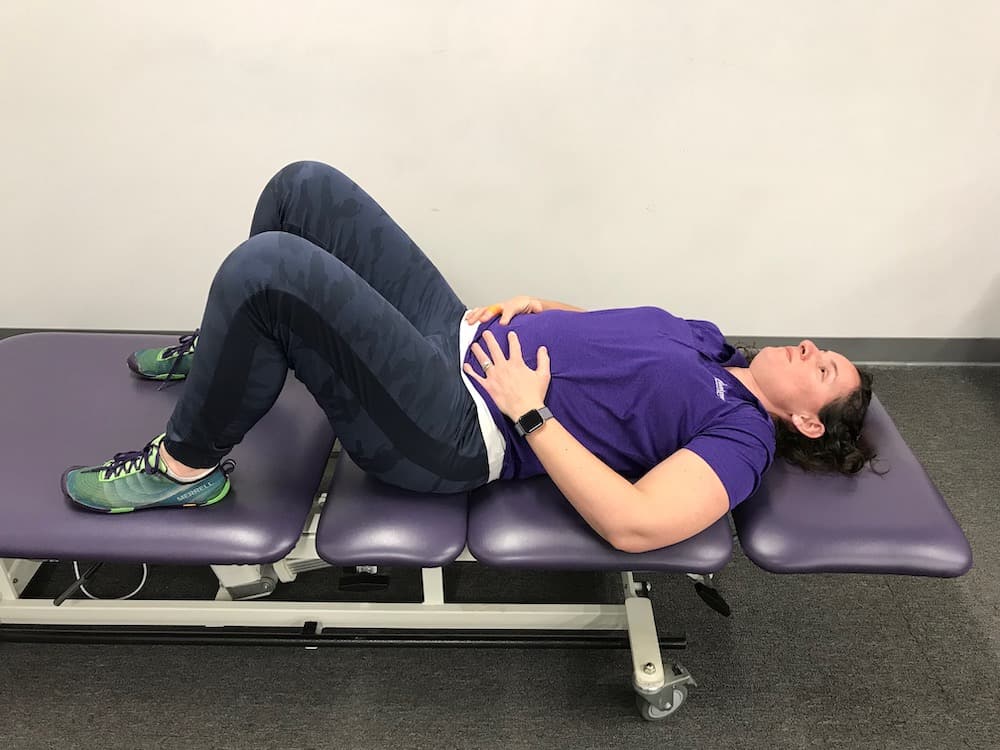
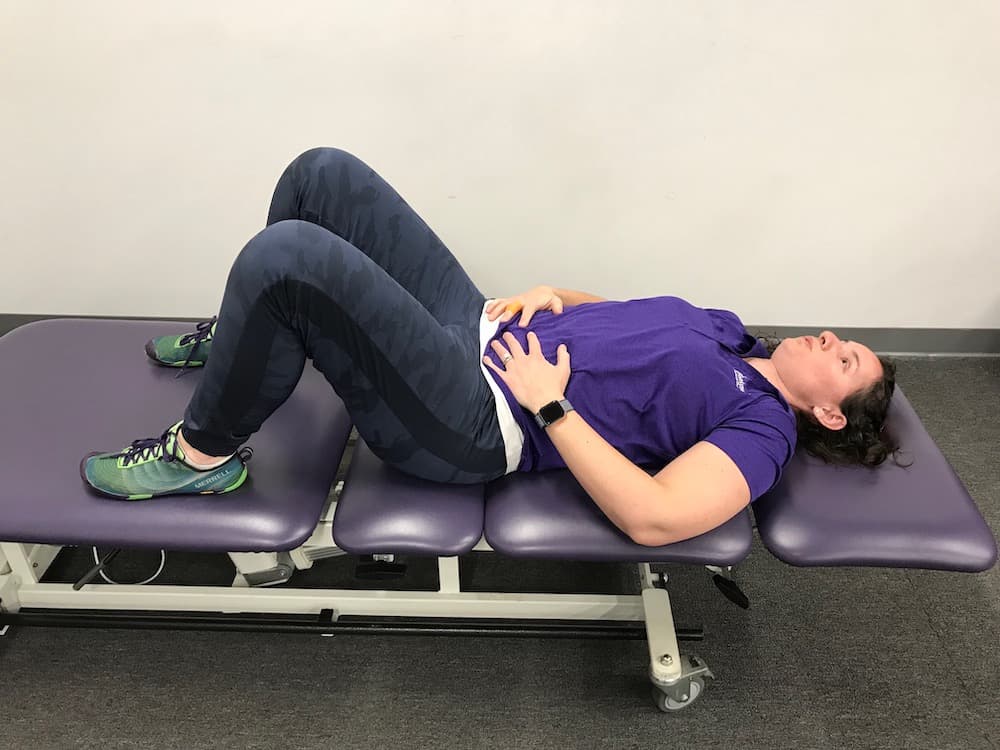
This is also known as belly breathing and something that is commonly used to help relax the entire body. This will correspondingly help to reduce pain, stress, and tension along the entire system. So, find a comfortable place to lay down on your back and keep your knees bent (this will take the pressure off your spine). Place your hands on your stomach and you are going to take a deep breath into your hands. When I tell patients to try this, they commonly puff up their chest like a proud penguin. Instead, I want you to breathe your air down into your stomach so that your belly gets bigger as it fills with air.
This is something that can be difficult because we are commonly told to “suck in our stomach” to make us look slimmer. This breathing technique is the exact opposite of that! So, your belly will rise with your inhale and then you will slowly exhale your breath out of your mouth like you are blowing bubbles. Try this 5 times, relax, and then try…
Letting Go Breath
Ok so you are going to start and take a deep breath in to prepare. Then as you exhale you are going to “sigh” your breath out. Essentially you are exhaling with drama. Repeat this 5 times.
So now you know 2 different breathing types that you can practice with or without yoga as breathing is essential to life!
Moving on to the movements and I first want you to know that there are so many different yoga poses. There are modifications that you can make to every pose. You can involve your arms, but you don’t have to if you are dealing with pain. You can make yoga fit for your body and pick the poses that make the most sense for your system.
Here is a 2-minute yoga flow program that you can fit into your day to get all the benefits of yoga without taking all your time.
Cat Cow
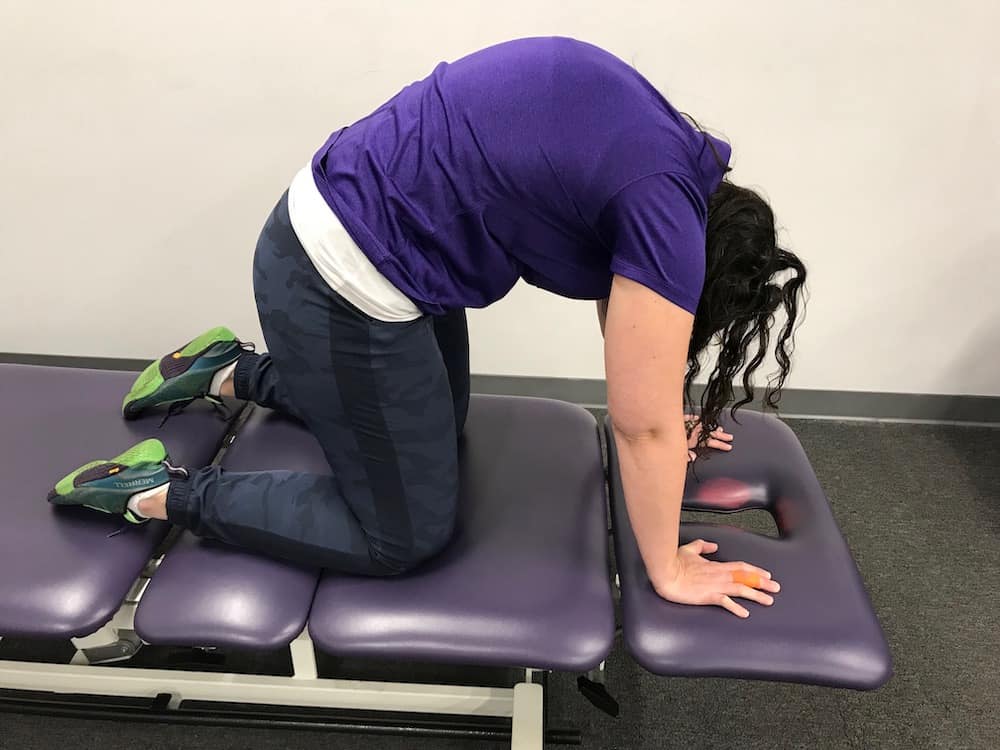
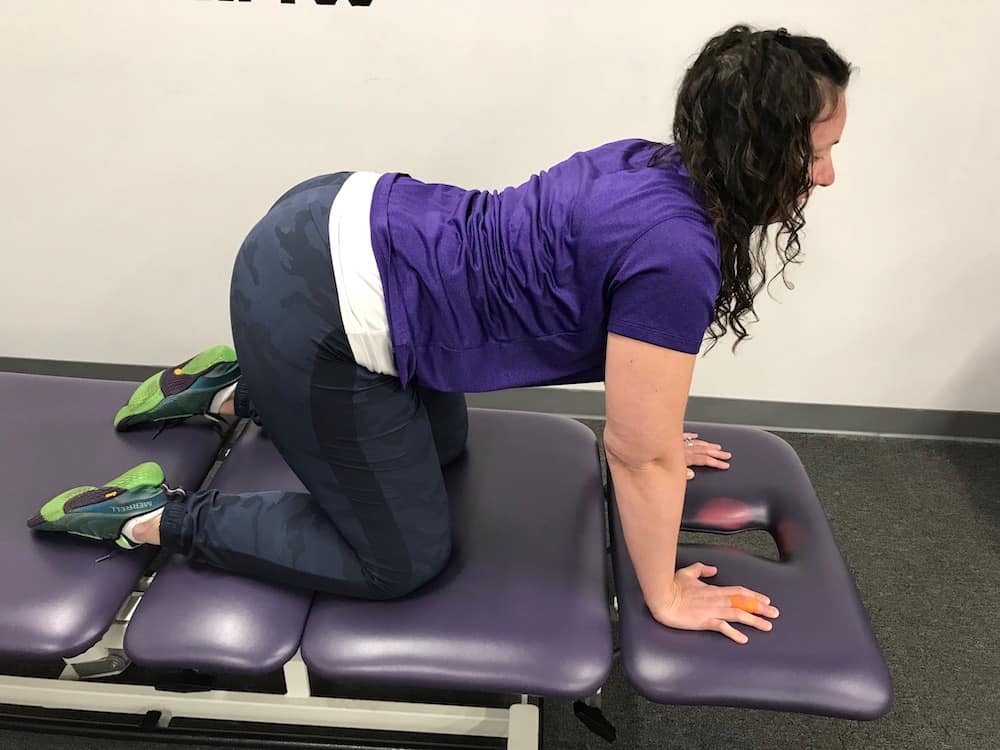
This move can be done in standing, sitting, kneeling OR on your hands and knees. So, if you come down to your hands and knees making sure that your hands are under your shoulders as well as your knees being under your hips. Now start with your head and tuck it under making sure to not move into a painful range (think about stretching movements). Then arch your shoulders into your spine up as if you are turning into an angry cat. Then allow your hips to tuck under your body so that your entire spine is in a curved or “c” shape. Hold this position for a few seconds, whatever feels natural to your system. Then allow your body to move in the opposite direction.
Stick your bottom up and backwards, then allowing your back to sink down. The final part of this movement will be your head looking up always making sure to move through stretching, not painful ranges of motion.
Gently move from cat to cow and try to pair your breathing with the movements. See what feels right to your system and what makes sense on when you inhale versus when you exhale. Repeat this about 10 times.
Wag the Tail
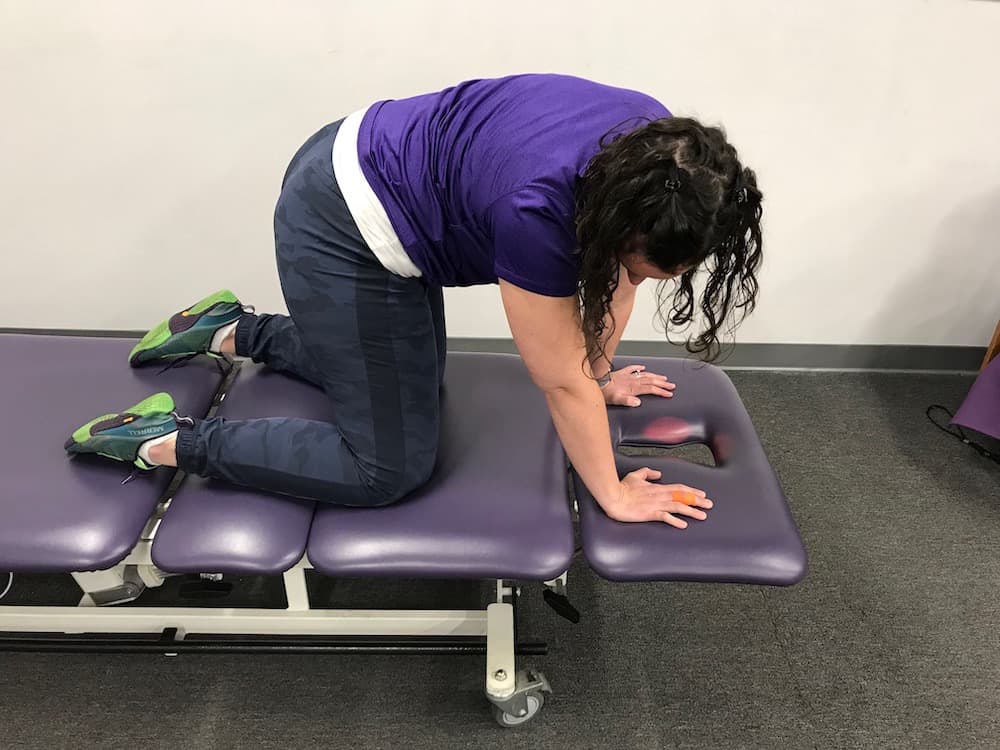
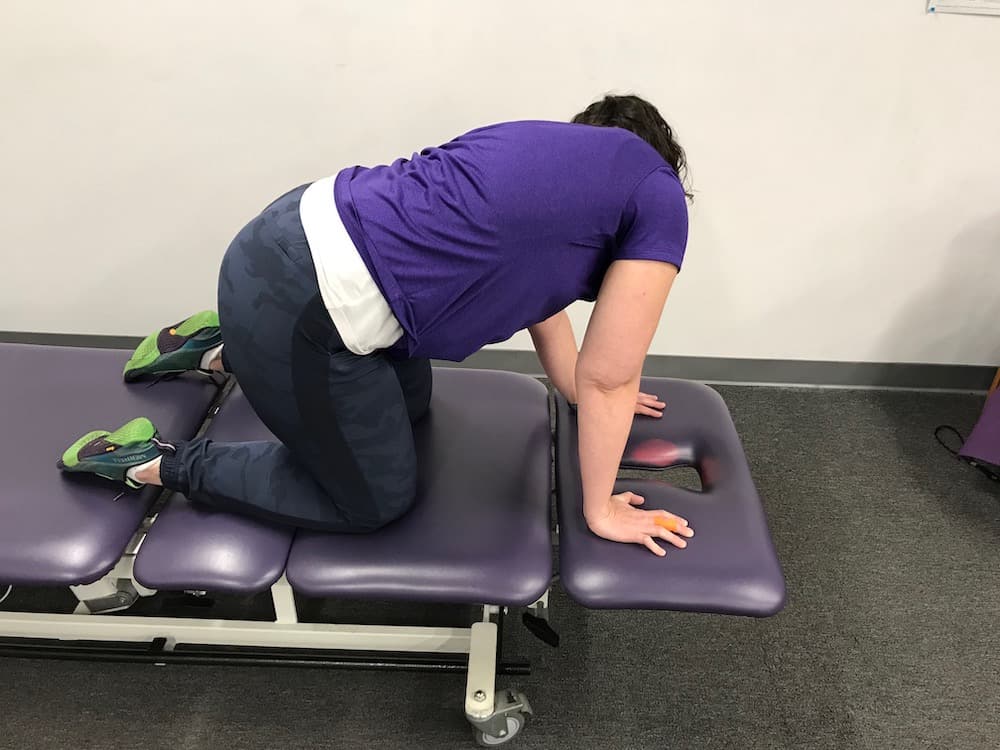
Come back to your starting position of your hands under your shoulders and your knees under your hips. This can also be done in standing or kneeling, but not as easy in sitting. Make sure that your back is flat or in a neutral position. Move your bottom to one side and you can also tilt your head towards that shoulder as if you are “wagging your tail”. Then repeat this on the other side. Move at your own pace and allow your body to feel the stretch along your sides. Wag your tail 10 times on each side to really allow the stretch.
Rock Backs
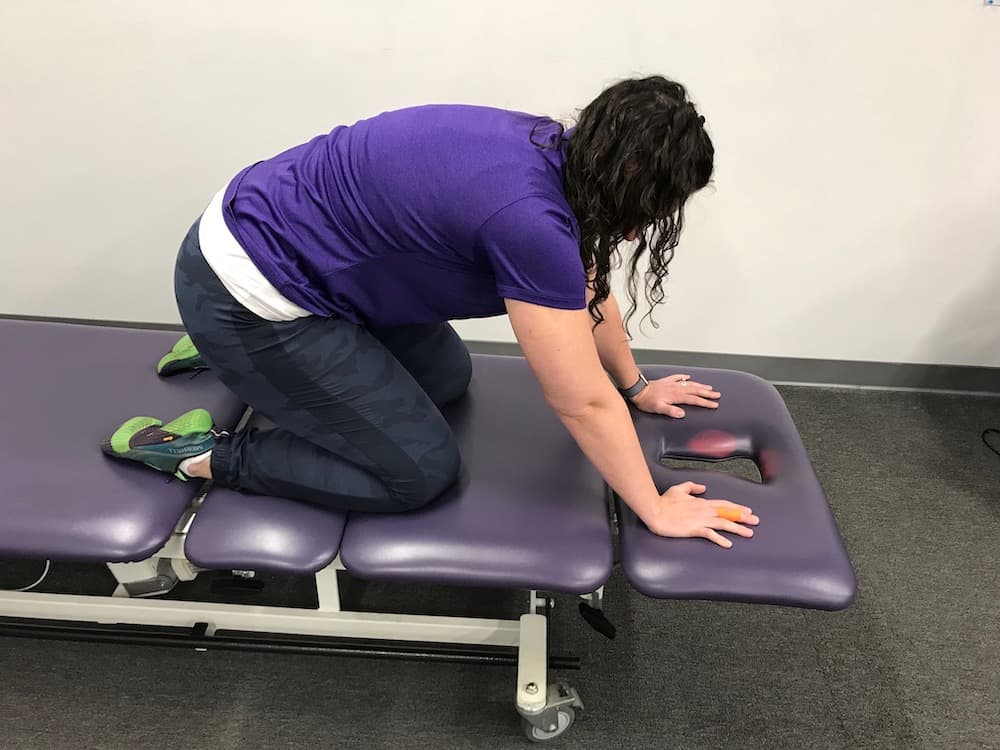
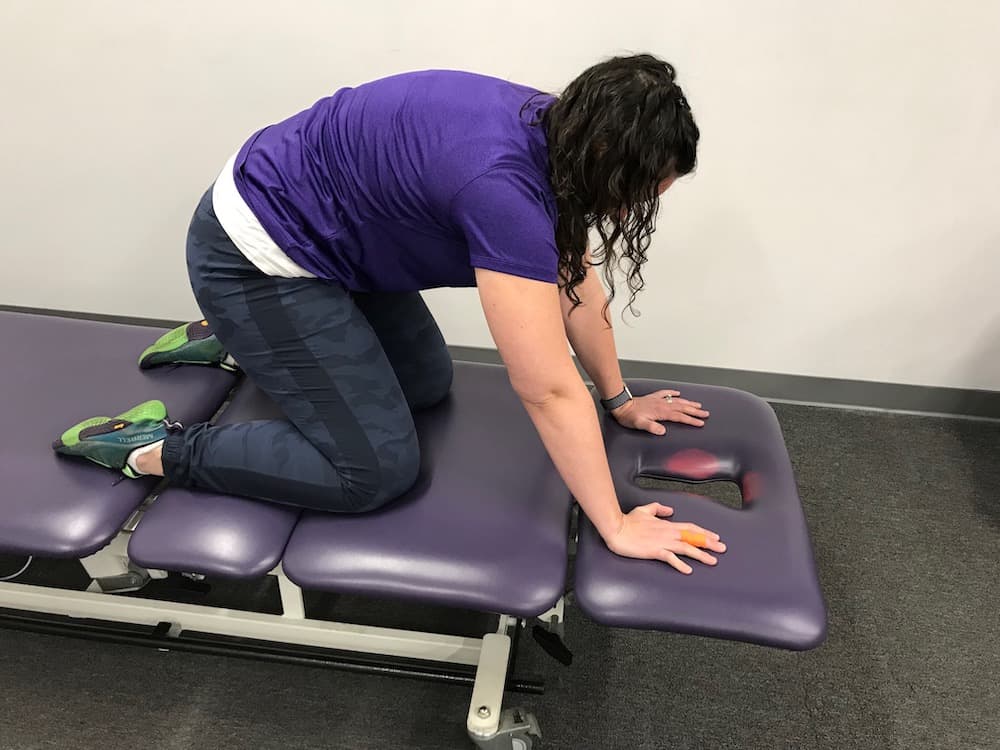
This will also start in the same position with your hands under your shoulders and knees under your hips. You are going to make sure that your pelvis or lower back is in a neutral position meaning you want to have some natural abdominal engagement to support the spine. You are going to keep this neutral spine and slowly rock your body back onto your hips BUT stop when your feel your back start to move out of that neutral posture.
This can be a subtle movement and if I have lost you at this point in time, make sure to check in with your physical therapist that understands the basics of yoga. Essentially you are going to rock back and forth to get some more movement in your hips without injuring your lower back.
If you are liking this position and want to challenge yourself, try diagonal rock backs. Start in the same position and rock back in a diagonal motion to get a different stretch along your back. Try 5-10 repetitions in each position and move at your own pace.
Child’s Pose
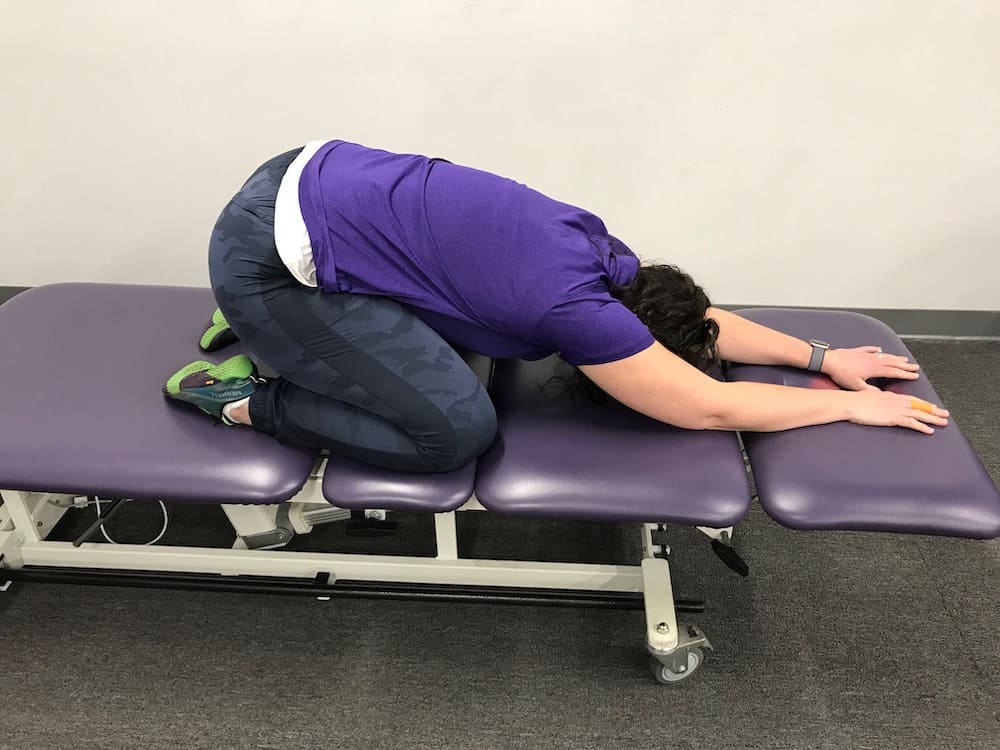
It is always important to end your yoga flow in a relaxed position and focus on your breathing. From your rock back position, rock all the way back to your heels. Now you can either sit on your knees OR you can bring your knees out to the side in a wide position and sit on your feet. Find which position feels best to your lower body and then focus on your hands. You can bend your elbows and rest your head on your hands or even use a yoga block to support your upper body. You can also stretch your arms out in front of you and feel a long stretch down your back.
This is a pose that you can move both arms to one side to feel a deeper side stretch. But end your yoga flow with your arms in the center and again, focus on your breathing.
There you have it, just 4 poses to create a 2-minute yoga flow AND 2 breathing techniques to get your day started, improve your energy levels mid-day or end your day with relaxation.
This is just the start of different yoga poses to stretch your muscles, lengthen your spine, relax your entire system and so much more! Talk with a physical therapist that has a good understanding of yoga, like those at Breakaway Physical Therapy, so that they can help you incorporate this into your day or workout routine. Our body craves movement as we were not meant to be sitting at a desk all day long.
Send us an email at getbetter@breakawaypt.com if you would like more information on how you can understand yoga fitting into your life and helping your body feel the best that it can be!



